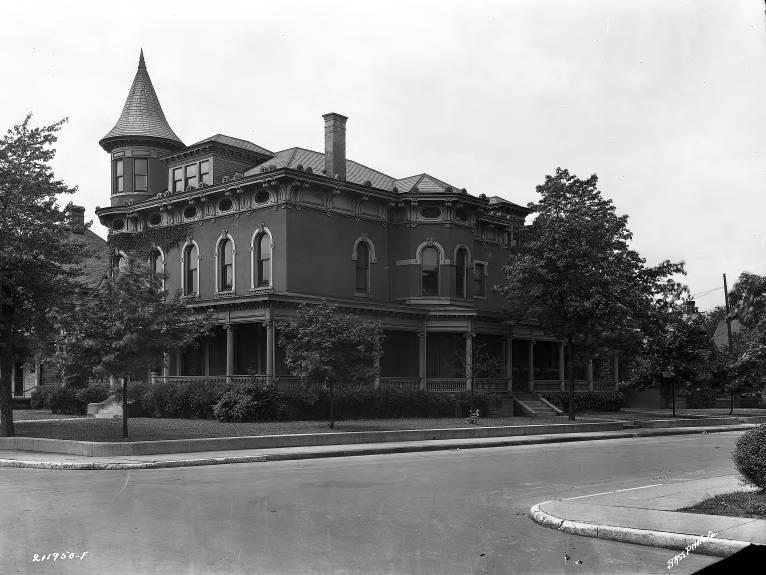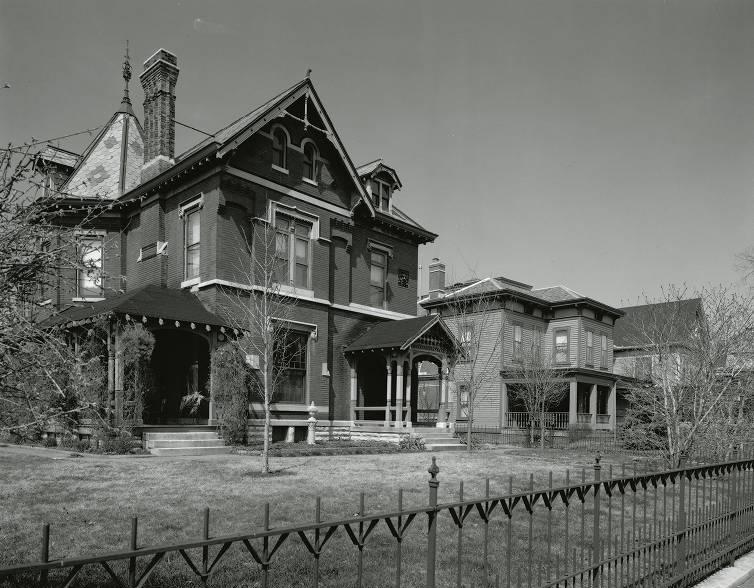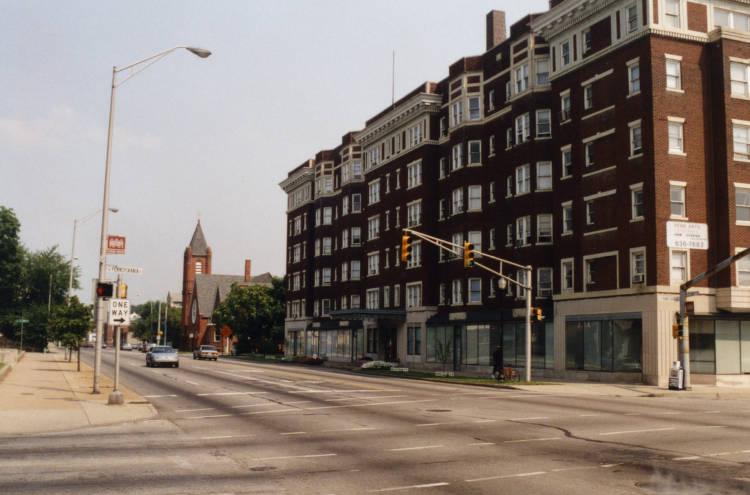Bounded by 16th Street, Bellefontaine Street, I-65, and Pennsylvania Street, the area now known as the Old Northside began as two communities that grew into one neighborhood. In the 1850s, provided a campus for North Western Christian University (later ) on farmland near 13th Street and College Avenue. A small town known as College Corner grew up around the school building and served the university from 1855 to 1875. The second neighborhood was an outgrowth of the affluent residential development north of the city’s , primarily along Meridian Street.

Imposing homes in the Gothic Revival, Italianate, Second Empire, Queen Anne, Eastlake, and Stick styles were built between 1870 and 1914 on the northside. Politicians such as and were northside residents, as were businessmen , Hiram P. Wasson, and Herman Lieber. Authors and also lived in the neighborhood.
After World War I, the near northside began to decline as the commercial district expanded northward and residents built new, more fashionable homes north of 38th Street. This trend accelerated during World War II when housing pressures prompted the subdivision of large homes into apartments and rooming houses.

By the 1960s and 1970s, the neighborhood suffered from poverty, neglect, and commercial intrusion. A small group of homeowners seeking to reverse the trend and began to restore residences in the early 1970s. They founded Old Northside, Inc., in 1975, and sponsored home tours to raise funds and focus attention on the area’s architectural significance.
In 1978, the district was listed on the National Register of Historic Places. Old Northside, Inc. Its policies were controversial, however, with lower-income residents, who were represented by the Citizens Neighborhood Coalition. They felt excluded from the neighborhood organization and feared displacement by new property owners. In 1979, an IUPUI study concluded that minimal displacement had taken place through historic preservation, although renters could be forced to leave if apartments were converted into condominiums. The issue was defused as rental units remained available.

The designated the neighborhood as an official Indianapolis historic district in 1978. In 1990, the neighborhood association created the Old Northside Foundation as a 501(c)(3) organization so that it could accept gifts and apply for grants. By 1993, approximately 80 percent of the housing stock had been renovated in the 36-square-block area. Successful restoration efforts in the Old Northside encouraged historic preservation efforts in adjacent neighborhoods.
The Old Northside, Inc., and its nonprofit foundation are very active. Its land use committee reviews Indianapolis Historic Preservation Commission applications for individual residents and assists with the application process. It raises funds for new trees, street lamps, and neighborhood parks.

Is this your community?
Do you have photos or stories?
Contribute to this page by emailing us your suggestions.